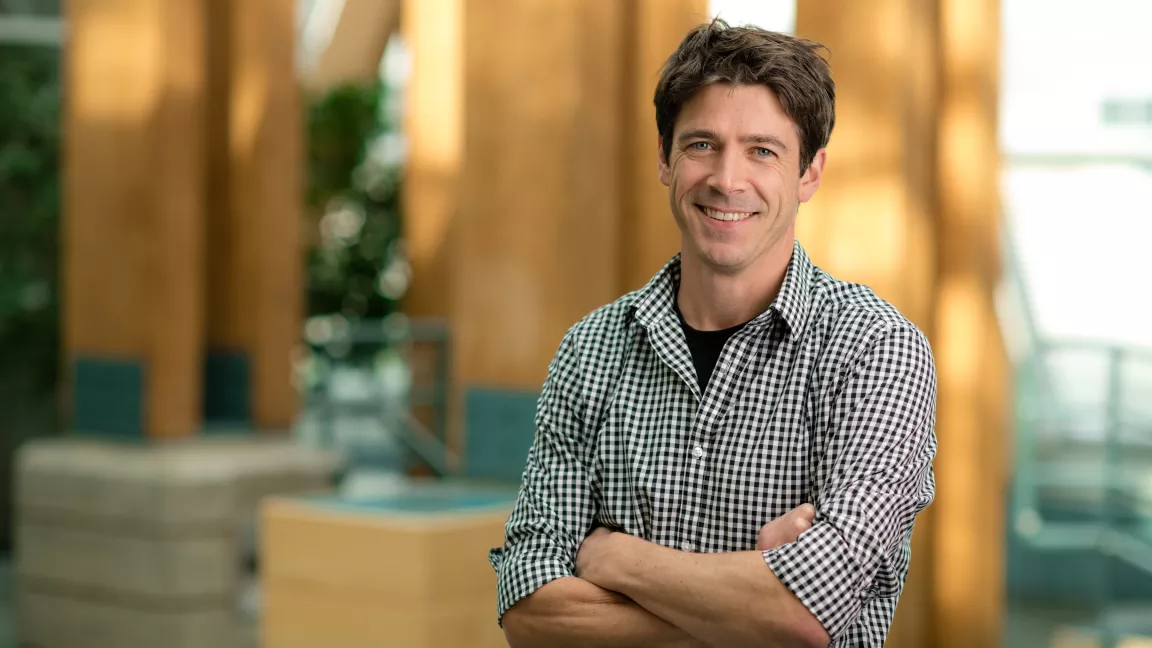Mountain community adaptation to changing snowpacks and geohazards
Geography, Earth and Environmental Sciences Associate Professor Dr. Joseph Shea is leading a Pacific Institute for Climate Solutions-funded project that aims to give mountain communities tools to face changing landscapes.

Story written by Michelle Mackintosh and shared by the Pacific Institute for Climate Solutions.
Rockfalls, landslides, mudslides and floods are facts of life in British Columbia mountain communities like Valemount, McBride and Dunster. As mountain snowpacks change due to climate change, and those changes affect these typical geohazards, how can these communities better prepare for the challenges to come?
Mountain Community Adaptation to Changing Snowpacks and Geohazards, a UNBC research project funded by the Pacific Institute for Climate Solutions (PICS), will connect people and community leaders with information and real-time data to help them adapt to climate change impacts.
The project will receive $180,000 over three years. Project partners include the Regional District of Fraser-Fort George, the Village of Valemount, the Dunster Community Forest, the Valemount Community Forest, and the BC Ministry of Forests.
“This project is built around community adaptation and resilience, that’s the starting point,” says Dr. Joseph Shea, UNBC Associate Professor in the Department of Geography, Earth and Environmental Sciences, and project principal investigator.
“We’ll be looking at what ways these communities are vulnerable to these geohazards and changing mountain snowpacks. What issues do members of the community and decision-makers in the community see? How are these expected to change in the future under climate change?” he says.
“We’re really trying to go to the community. Talk to the decision-makers, talk to people who work in the community forests, talk to First Nations groups who have territories in the area. What do they see as concerns, are there events or incidents that we should know about?”
The project will compile a geohazard database for the region and build a rapid response tool that can quickly collect and display data and imagery during or after a geohazard event. Easy access to real-time data on snowpack, ground movement, and climate conditions could help community leaders make quick, crucial decisions.
Climate model outputs will also be used to develop scenarios for how climate change will affect mountain snowpacks and the triggers for mountain geohazards.
These tools will be refined and developed in close collaboration with local residents and leaders to address their concerns. The project will hold town halls and school presentations and offer reports and scientific presentations as part of the planned community engagement.
“This collaborative approach for identifying and better understanding the geo and climate hazards in our region will greatly assist in furthering the village’s efforts for climate adaptation and risk reduction strategies,” says project partner Mayor Owen M. Torgerson of the Village of Valemount.
“Once we have the knowledge, we can work to mitigate it,” says project partner Dannielle Alan, Area H director for the Regional District of Fraser-Fort George. “We can share that knowledge so that we can use it in a positive way to help our communities stay healthy, help our agriculture remain viable, and protect our water systems.”
Ultimately, this research could form a template to assist other mountain communities in their own climate change adaptation work — each with their own specific climate and hazard profiles.